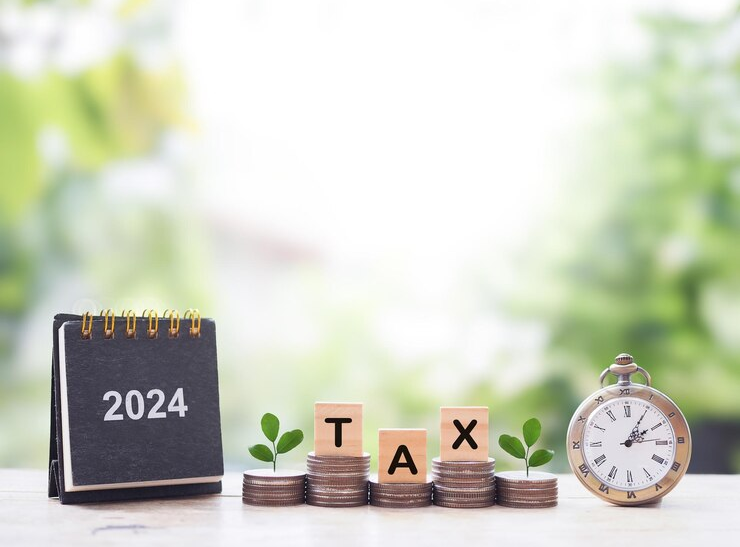As the financial year progresses, individuals begin seeking effective ways to minimize their tax liabilities while maximizing their investment returns. Equity Linked Savings Schemes (ELSS) are one of the most popular options for tax-saving mutual funds in India, offering both tax benefits and potential for high returns. This comprehensive guide will delve into the top tax-saving mutual funds, specifically focusing on the best ELSS options for 2024. By the end of this article, you’ll be equipped with the knowledge needed to make informed investment decisions and optimize your tax savings.
Introduction to ELSS
What is ELSS?
Equity Linked Savings Schemes (ELSS) are a type of mutual fund that primarily invests in equities or equity-related instruments. They are designed to provide tax benefits under Section 80C of the Income Tax Act, making them an attractive choice for investors looking to save on taxes while aiming for capital growth.
Key Features of ELSS
- Tax Benefits: Investments in ELSS qualify for tax deductions of up to ₹1.5 lakh per annum under Section 80C of the Income Tax Act.
- Equity Exposure: ELSS funds primarily invest in stocks, offering potential for high returns due to the growth potential of equities.
- Lock-In Period: ELSS comes with a mandatory lock-in period of 3 years, which is the shortest among tax-saving instruments under Section 80C.
- Potential for High Returns: Due to their equity exposure, ELSS funds have the potential to generate higher returns compared to traditional tax-saving options like PPF or NSC.
- Diversification: ELSS funds invest in a diversified portfolio of stocks, reducing the risk associated with investing in individual equities.
Why Invest in ELSS?
Benefits of Investing in ELSS
- Tax Savings: By investing in ELSS, you can claim deductions of up to ₹1.5 lakh from your taxable income, thereby reducing your tax liability.
- Capital Appreciation: Since ELSS funds invest in equities, they have the potential to offer substantial capital appreciation over the long term.
- Professional Management: ELSS funds are managed by professional fund managers who actively make investment decisions, allowing you to benefit from their expertise.
- Liquidity: Although there is a 3-year lock-in period, ELSS funds are relatively liquid compared to other tax-saving instruments, as they can be sold or redeemed after the lock-in period.
- Flexibility: ELSS funds offer various investment options, including lump-sum investments and Systematic Investment Plans (SIPs), making them flexible to different investment preferences and financial goals.
How ELSS Compares with Other Tax-Saving Options
- Public Provident Fund (PPF): PPF offers guaranteed returns and a 15-year lock-in period. ELSS, on the other hand, provides equity exposure and has a shorter lock-in period.
- National Savings Certificate (NSC): NSC has a 5-year lock-in period and offers fixed returns. ELSS has a shorter lock-in period and potential for higher returns due to its equity investments.
- Tax-saving Fixed Deposits (FDs): Tax-saving FDs have a 5-year lock-in period with fixed returns, whereas ELSS funds have the potential for higher returns and a shorter lock-in period.
Top ELSS Funds for 2024
Selecting the right ELSS fund is crucial for maximizing returns and achieving your tax-saving goals. Here are some of the top ELSS funds for 2024 based on their historical performance, fund management, and investment strategy:
| Fund Name | Category | 1-Year Return | 3-Year Return | 5-Year Return | Expense Ratio |
| Mirae Asset Tax Saver Fund | ELSS | 15.68% | 18.92% | 20.35% | 0.63% |
| Axis Long Term Equity Fund | ELSS | 17.54% | 19.22% | 21.07% | 0.62% |
| SBI Magnum Tax Gain Scheme | ELSS | 16.42% | 17.78% | 19.50% | 1.01% |
| HDFC Taxsaver Fund | ELSS | 14.89% | 16.55% | 18.24% | 1.07% |
| ICICI Prudential Long Term Equity Fund | ELSS | 15.98% | 18.15% | 19.80% | 0.89% |
| UTI Long Term Equity Fund | ELSS | 16.25% | 17.92% | 18.90% | 1.05% |
| Franklin India Taxshield | ELSS | 15.40% | 17.25% | 19.10% | 0.94% |
| Kotak Tax Saver Fund | ELSS | 14.75% | 16.85% | 18.75% | 0.90% |
| Aditya Birla Sun Life Tax Relief 96 | ELSS | 14.50% | 17.10% | 18.60% | 1.15% |
| DSP Tax Saver Fund | ELSS | 15.20% | 16.80% | 18.00% | 1.10% |
How to Choose the Right ELSS Fund
- Evaluate Historical Performance
While past performance is not a guarantee of future results, it provides valuable insights into the fund’s ability to generate returns over time. Compare the historical performance of different ELSS funds to identify those with a consistent track record of delivering strong returns
- Assess Fund Manager Expertise
The expertise of the fund manager plays a crucial role in the performance of an ELSS fund. A skilled fund manager with a proven track record can make informed investment decisions, which can significantly impact the fund’s returns. Here’s what to consider when assessing fund manager expertise:
- Experience: Look for fund managers with several years of experience in managing equity funds. Experienced managers are more likely to navigate market volatility effectively.
- Track Record: Evaluate the fund manager’s track record with other funds they manage. Consistent performance across different market conditions is a positive indicator.
- Investment Philosophy: Understand the fund manager’s investment philosophy and approach. Ensure it aligns with your investment goals and risk tolerance.
- Team Support: Consider the strength and experience of the investment team supporting the fund manager. A well-rounded team can contribute to better decision-making.
- Analyze Investment Strategy
Each ELSS fund has its own investment strategy, which can influence its performance and suitability for your portfolio. Key aspects to analyze include:
- Investment Focus: Determine whether the fund focuses on large-cap, mid-cap, or small-cap stocks. Different market capitalizations have different risk and return profiles.
- Sector Allocation: Review the fund’s sector allocation to ensure it aligns with your investment preferences and risk tolerance. Some funds may have a higher exposure to specific sectors.
- Diversification: Evaluate the level of diversification within the fund’s portfolio. A well-diversified fund can help mitigate risk and reduce the impact of poor performance in any single stock or sector.
- Style of Investing: Understand whether the fund follows a growth or value investing style. Growth funds focus on stocks with high growth potential, while value funds invest in undervalued stocks.
- Consider Expense Ratio
The expense ratio is an important factor that affects the overall returns of an ELSS fund. It represents the percentage of assets used for fund management and administrative expenses.
- Lower Expense Ratio: A lower expense ratio means that more of your investment’s returns go to you rather than to cover fund expenses. However, don’t choose a fund solely based on a lower expense ratio—balance this with other factors like performance and manager expertise.
- Compare Ratios: Compare the expense ratios of different ELSS funds to ensure you are getting value for the cost. Typically, ELSS funds have relatively low expense ratios compared to other equity funds.
- Review Risk Factors
Understanding the risk associated with an ELSS fund is crucial for making an informed investment decision. Assess the following risk factors:
- Volatility: Review the fund’s historical volatility to gauge how much its returns fluctuate. Higher volatility means greater risk but also the potential for higher returns.
- Risk Measures: Look at risk measures such as standard deviation, beta, and Sharpe ratio to understand the fund’s risk profile and performance relative to its risk.
- Economic and Market Conditions: Consider how economic and market conditions could impact the fund. For example, economic downturns or market corrections may affect the performance of equity-focused funds.
- Check Fund Ratings and Reviews
Fund ratings and reviews can provide additional insights into the quality and performance of an ELSS fund. Consider the following:
- Ratings Agencies: Check ratings from reputable agencies like CRISIL, Morningstar, or Value Research. These agencies evaluate funds based on various criteria, including performance, risk, and management quality.
- Investor Reviews: Read reviews and feedback from current and past investors. This can offer a perspective on investor satisfaction and fund manager transparency.
- Assess Fund’s Historical Performance in Different Market Conditions
Evaluate how the fund has performed during various market conditions, such as bull and bear markets. This can help you understand how the fund might perform in future market cycles.
- Bull Market Performance: Assess how well the fund performed during rising markets. This can indicate the fund’s ability to capitalize on growth opportunities.
- Bear Market Performance: Analyze the fund’s performance during market downturns to gauge its risk management and resilience.
- Evaluate Liquidity and Redemption Options
Consider the fund’s liquidity and redemption options to ensure they meet your needs:
- Liquidity: Ensure that the fund has sufficient liquidity to allow for smooth transactions and access to your investments when needed.
- Redemption Process: Review the fund’s redemption process and any associated charges or penalties. Some funds may have specific procedures or fees for redeeming investments.
- Understand Tax Implications
While ELSS funds offer tax benefits under Section 80C, it’s essential to understand the overall tax implications:
- Capital Gains Tax: ELSS investments are subject to long-term capital gains (LTCG) tax. Gains over ₹1 lakh are taxed at 10% without indexation benefits.
- Tax Efficiency: Consider the fund’s tax efficiency, including any strategies employed to minimize tax liability.
- Align with Financial Goals and Risk Tolerance
Finally, ensure that the ELSS fund aligns with your overall financial goals and risk tolerance:
- Investment Horizon: Match the fund’s investment horizon with your financial goals. ELSS funds are suitable for long-term investments due to their 3-year lock-in period.
- Risk Tolerance: Choose a fund that fits your risk tolerance. High-risk funds may offer higher returns but can also experience significant fluctuations.
Conclusion
Investing in ELSS funds can be a highly effective strategy for saving on taxes while aiming for substantial capital appreciation. By evaluating historical performance, fund manager expertise, investment strategy, expense ratio, risk factors, and other critical aspects, you can select the best ELSS fund for your financial goals.


















